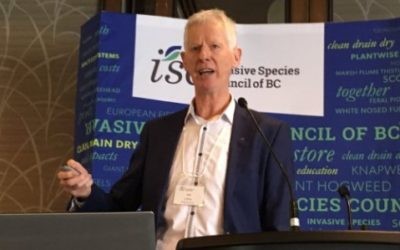Crayfish Plague Confirmed in River in Co Cavan
By now you will probably be aware that the presence of the deadly crayfish plague (caused by the fungus-like organism Aphanomyces astaci) has been confirmed in the River Erne system. The outbreak was detected when up to 600 dead native white-clawed crayfish (Austropotamobius pallipes) were found in a river attached to the River Erne in Co. Cavan in July 2015.
Ireland has the largest remaining populations of white-clawed crayfish in Europe, where it is listed under Annex II of the EU Habitats Directive. As such, this is an important conservation species and one that deserves special protection. No other crayfish species are present in Irish freshwaters, although a number of highly invasive alien crayfish species currently reside in UK waters.
What is Crayfish Plague?
Crayfish plague is known to be carried by crayfish other than our white-clawed species, in particular the Signal or North American Crayfish (Pasifastacus leniusculus). However, as no specimens of this species have been recorded in Ireland, it is probable that the pathogen (A. astaci) was introduced on contaminated equipment (possibly angling equipment that was used on a watercourse that harbours the Signal crayfish). The causative agent for the plague has a simple life cycle where the vegetative phase of the fungus-like organism (A. astaci) invades and spreads the host tissue, producing primary spores. These then release swimming zoospores that attach to a susceptible host and germinate to produce the invasive vegetative phase.
How Does Crayfish Plague Spread?
The infectious free-swimming zoospores are capable of surviving outside the host and out of water, in damp conditions, for short periods (from 1 to several days). Suitable damp conditions are available on damp landing or keep nets used by anglers, on damp clothing or mud on the boots of those working or recreating in or near water, on adherent mud or water on boats or machinery that operates on watercourses, or any other material or equipment that is capable of retaining water for a period of time.
Anglers, boaters, water maintenance operators and others that use our watercourses for work or play could as a perfect vectors and inadvertently aid in the spread of the crayfish plague.
How Can You Stop the Spread of Invasive Crayfish Plague?
The crayfish plague is lethal to our native and protected white-clawed crayfish and its spread within the country and must urgently be stopped. This will only be achieved through the implementation of rigorous biosecurity procedures by all water users, whether recreational or commercial. Thorough cleaning, drying and/or disinfection will minimise the risk of spread of this devastating pathogen.
The infectious zoospores of A. astaci have been proven to be susceptible to the activity of the disinfectant Virkon S, which is the same as that of Virkon Aquatic. Research conducted in Queen’s University Belfast under Prof Jaimie Dick (www.qub.ac.uk) has demonstrated that Virkon Aquatic can effectively control a number of invasive plant and invertebrate species (e.g. Curly-leaved waterweed Lagarosiphon major and Asian clam Corbicula fluminea). This activity, along with its strong disinfectant properties and safety near watercourses, indicates that Virkon Aquatic is a suitable disinfectant for use to limit the spread of the invasive and highly damaging crayfish plague, as well as some other invasive species in our watercourses.
Dr. Joe Caffrey








Recent Comments